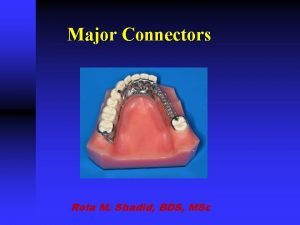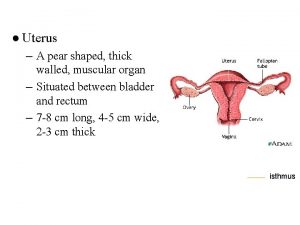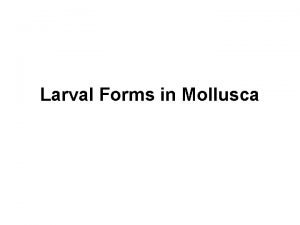Studies of Pear Shaped Nuclei using rare isotope




- Slides: 4

Studies of Pear Shaped Nuclei using rare isotope beams May 5 th 2015 -Maxwell Cao Nuclear deformation is a well studied subject; calculated through a multipole expansion of the mass distribution: • Quadrupole deformation: Prolate & Oblate ellipsoids; • Octupole deformation: Reflection-asymmetric (Pear shape) At present not much experimental data exist for octupole deformed nuclei. Why do we care? Physics beyond the Standard Model: 1. Any measurable atomic electric-dipole moment(EDM) would be enhanced by these octupole deformed nuclei, 2. Non-zero EDM of an atom means broken T symmetry, 3. Matter and antimatter asymmetry? Provide experimental data for nuclear structure theories. It’s fun to know.

Studies of pear-shaped nuclei using accelerated radioactive beams Gaffney, L. P. et al. Nature 497, 199 -204(2013) How was it done? Measuring electric transition moment: • Heavy radioactive rare nuclei (220 Rn & 224 Ra) beams were produced by spallation in a thick uranium carbide target bombarded by protons from the CERN PS Booster, • The beams are then scattered off thin metal foils(60 Ni, 112 Cd or 114 Cd, and 120 Sn) to be excited and then radiate —Coulomb excitation, • γ-rays emitted were detected by MINIBALL, an array of 24 high-purity germanium detectors. Scattered projectile and target recoils were detected in a highly segmented silicon 220 detector. 224 Ra Rn 220 Rn 224 Ra Intrinsic moments Qλ are then calculated from the experimental value of the reduced m. e. of electric transition moments <I’||Eλ||I>. Comparisons with theoretical predictions of cluster model and mean-field calculations have been made.

Conclusions Both 220 Rn, 224 Ra octupole deformation have been observed, the latter exhibit stronger octupole collectivity. It’s also likely that 219, 221 Rn have smaller octupole-enhanced EDMs than 223, 225 Ra. But there could be other Rn isotopes that’s more favorable. Trends of intrinsic moments derived from this experiment favors mean-field calculations (D 1 M, D 1 S) more than Ra cluster model. What’s next? Studies on more Rn & Ra isotopes should be made to compare the trends of different models to the data. Gogny HFB calculations predict that Th and U isotopes with N = 134 -136 should have stronger patterns, but current facilities cannot generate such beams with sufficient intensity. FRIB might be able to accomplish. References: • Gaffney, L. P. et al. Nature 497, 199 -204(2013) • Lister, C. J. (Kim)& Butterworth, J. Nature 497, 190 -191(2013)

THANK YOU! Questions?






